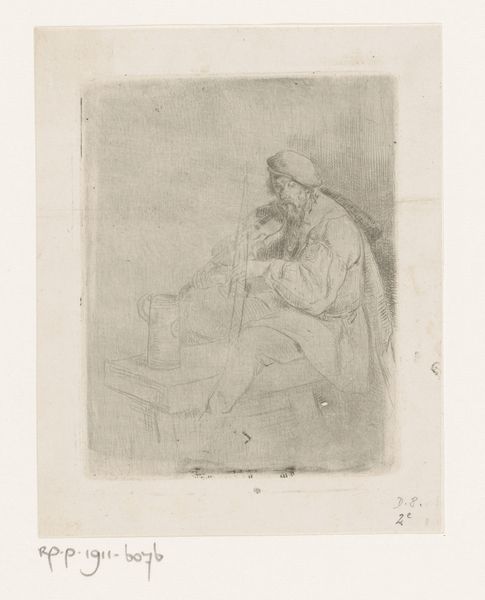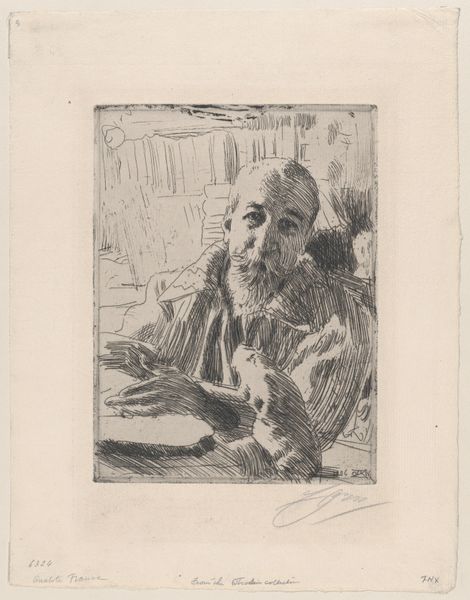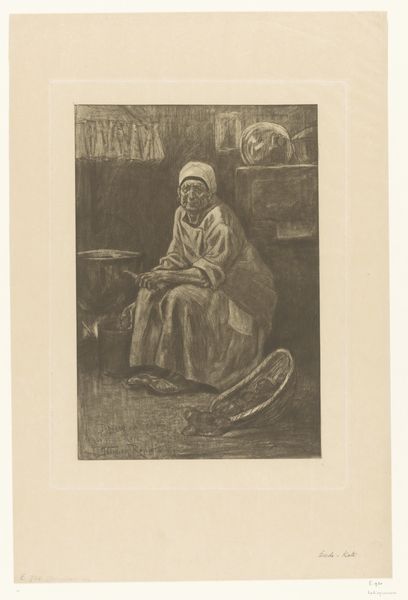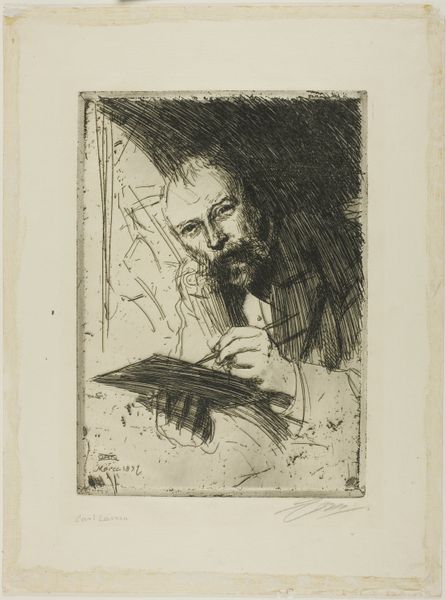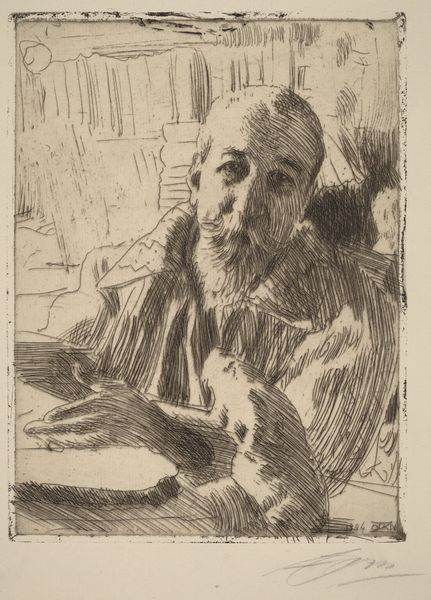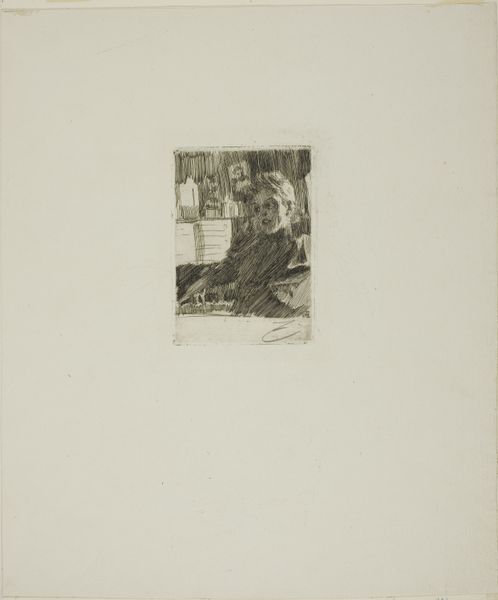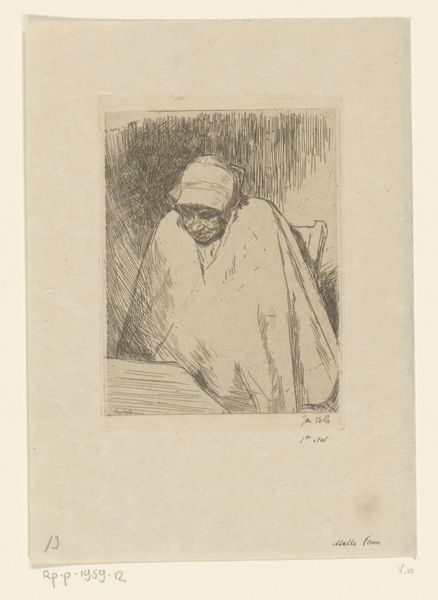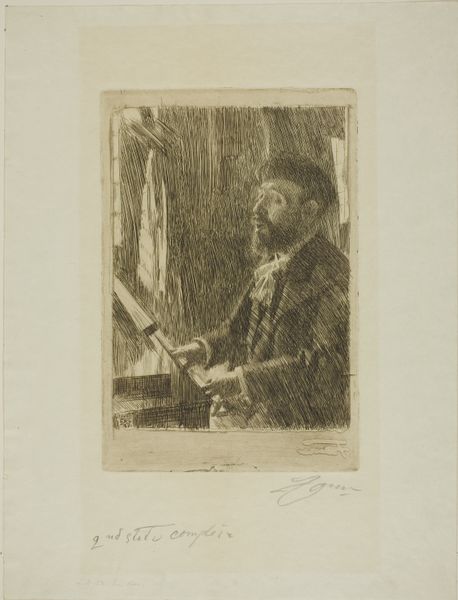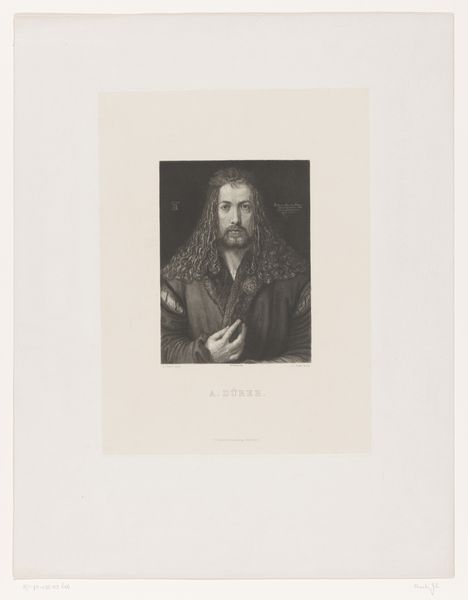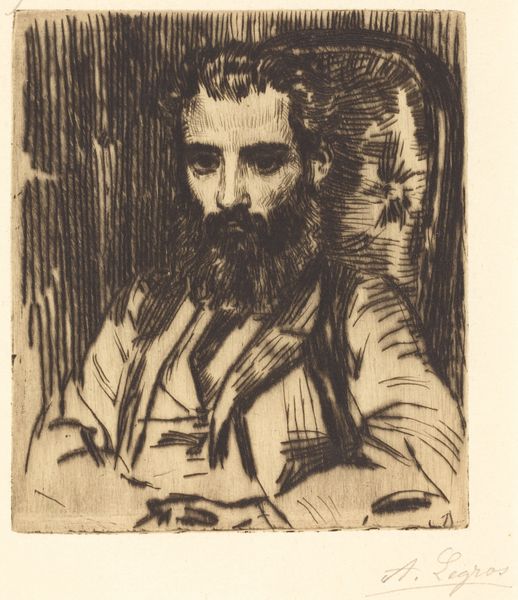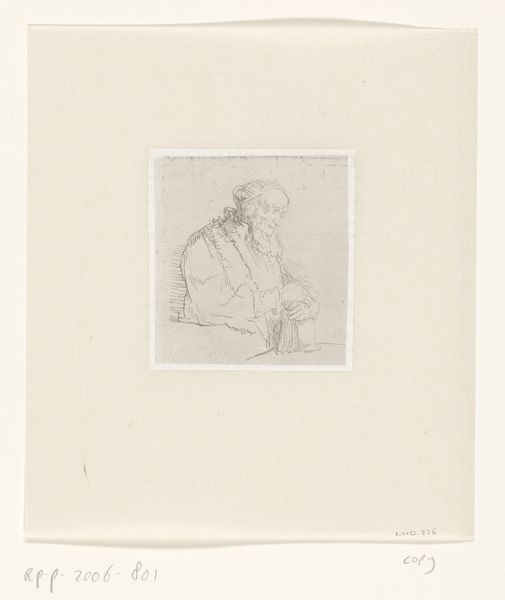
print, etching, paper, ink
#
portrait
#
ink paper printed
# print
#
etching
#
book
#
pencil sketch
#
paper
#
ink
#
genre-painting
#
academic-art
Dimensions: height 208 mm, width 138 mm
Copyright: Rijks Museum: Open Domain
Curator: Looking at Anna Mik’s etching, “Lezende jood,” which roughly translates to “Reading Jew,” created sometime between 1900 and 1925, the immediate sense is one of contemplation, almost melancholy. Editor: Yes, there is a palpable somber mood, wouldn’t you say? The composition is striking in its stark simplicity – the dark figure sharply contrasted against a soft, indistinct background. Notice how the density of the etched lines varies to define form and light. The textures she's conjured, particularly in the figure’s robes and beard, are quite impressive. Curator: The book itself acts as a powerful symbol here, representing knowledge, tradition, and faith. Reading is both a communal and a solitary act; the image is rife with implications. Note his downward gaze. It might evoke humility, wisdom, a dedication to understanding divine text. Editor: But, look closer. Observe the geometric forms emerging from the etching. See how the horizontal lines of the window intersect with the vertical lines of the wall? This strict adherence to form structures our engagement. And what of the very act of representing this subject? What ideological frame might dictate such formal precision? Curator: Perhaps a desire for respect and dignity through visual means. During this era, stereotypes and prejudices were rampant. The artist's choice to portray this man in a moment of devout study creates an image of profound humanity, a kind of subtle cultural resistance to that stereotyping, perhaps. Editor: Certainly, one might propose those readings based on social context, but wouldn't you concede that the artist’s command of her materials offers equally compelling insights into its meanings? For instance, the restrained color palette of blacks, whites, and grays evokes both the gravity of the scene and, technically, makes legible the distribution of light across form. Curator: I agree. The work clearly reveals an interest in light as both illumination and as a descriptor of volume, which aligns it somewhat with traditions of academic art and genre painting. Ultimately, it transcends any single narrative; it asks questions rather than gives answers, and leaves the viewer enriched, with the ability to consider what we do know and what is impossible for us to fully apprehend. Editor: An enigmatic blend of line and symbol, skillfully realized; a potent image for us to carry with us as we leave.
Comments
No comments
Be the first to comment and join the conversation on the ultimate creative platform.
